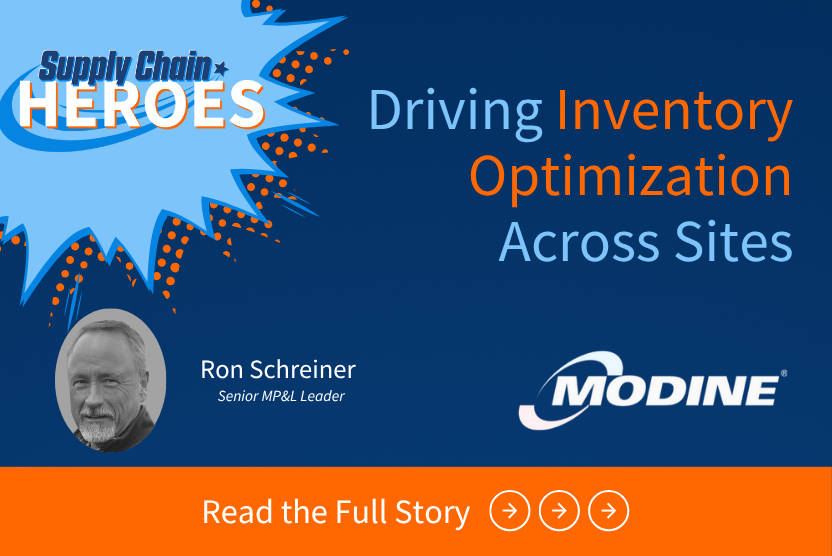You could be losing out on thousands of dollars by not having a strategic supplier management framework
The complexity of global supply chains exponentially the increasing the level and severity of risk. McKinsey released a report on structural supply chain fragility, “On average, an auto manufacturer has around 250 tier-one suppliers, but the number proliferates to 18,000 across the full value chain. Aerospace manufacturers have an average of 200 tier-one suppliers and 12,000 across all tiers.”
The combination of highly globalized supply chains and ongoing supply chain disruptions increases the vulnerability of manufacturing organizations worldwide. McKinsey also reported that a shortage disruption of 30 days or less could put the organization's earnings before interest, taxes, depreciation, and amortization (EBITDA) margin at a 3-5% risk.
Here are a few questions to consider when determining your current supplier risk:
- Does a single supplier source any of your top 10 items?
- Do you often experience stockouts?
- Does a significant amount of your inventory come from overseas vendors?
- Have supply chain disruptions caused a delay in your customer's on-time delivery?
If you answered yes to a majority of the questions above, then your organization is at high risk of supply chain disruptions. Now, you are probably wondering, what can my organization do to reduce the level of risk associated with suppliers and shortages.
How to improve supplier management and minimize shortage risk:
Having a strong strategic supplier management framework can help minimize risk.
A supplier management framework is a structured approach to managing suppliers that involves a set of processes, policies, and procedures that guide how a company engages with its suppliers. The framework outlines the steps a company should take to identify and select suppliers, negotiate contracts, monitor supplier performance, and manage supplier relationships.
The key components of a supplier management framework typically include the following:
Supplier Selection
This involves identifying and selecting suppliers that can meet the company's needs in terms of quality, cost, and delivery.
Contract Management
This involves negotiating and managing contracts with suppliers, including terms and conditions, pricing, and delivery schedules.
Performance Management
This involves monitoring and measuring supplier performance against agreed-upon metrics and taking corrective action when necessary.
Relationship Management
This involves building and maintaining positive relationships with suppliers to foster collaboration and achieve mutual goals.
A supplier management framework can help a company ensure that it is working with the right suppliers, managing contracts effectively, and achieving the desired level of performance from its suppliers. It can also help the company identify areas for improvement and optimize its supplier relationships for better business outcomes.
Now, how do you manage suppliers to improve their performance?
No one said managing suppliers is easy, especially when you have various suppliers spread across the world. However, it can be easier with best practices and utilizing tools that help strengthen supplier relationships.
Supplier Management Best Practices
Strategic Supplier Selection:
Choosing the right suppliers is the foundation of effective supplier management. Manufacturers should evaluate potential suppliers based on their capabilities, reliability, financial stability, and alignment with the organization's goals and values. Conducting thorough due diligence, including site visits and reference checks, is essential.
Collaboration and Communication:
Establishing clear lines of communication and fostering collaborative relationships with suppliers is vital. Regular meetings, performance reviews, and feedback sessions allow both parties to address concerns, share insights, and identify opportunities for improvement. Open and transparent communication promotes accountability and facilitates prompt issue resolution.
Performance Metrics and Key Performance Indicators (KPIs):
Defining and monitoring supplier performance metrics and KPIs are crucial for evaluating supplier effectiveness. Metrics could include on-time delivery, product quality, responsiveness, and cost efficiency. Regular performance assessments enable manufacturers to identify underperforming suppliers and work together to address any issues.
Supplier Development and Continuous Improvement:
Nurturing suppliers' growth and encouraging continuous improvement can yield long-term benefits. Manufacturers should provide feedback, share industry insights, and collaborate on process enhancements or innovations. Offering training programs or knowledge-sharing platforms can help suppliers enhance their capabilities, ultimately benefiting the manufacturer.
Risk Management:
Manufacturers should proactively assess and mitigate supplier-related risks. This involves conducting risk assessments, diversifying supplier sources, and establishing contingency plans. Regularly monitoring market conditions, geopolitical factors, and supplier financial stability is crucial for minimizing disruptions to the supply chain.
Technology Adoption:
Leveraging technology solutions can significantly enhance supplier management processes. Implementing supplier relationship management cloud-based platforms can streamline communication, facilitate data exchange, and automate tasks such as order tracking.
What should you look for in innovative supplier management solutions?
Innovative supplier management capabilities include:
Real-time communication
Through real-time communication, teams can work more efficiently knowing that they have the most up-to-date information.
Automated supplier performance tracking
Automation helps teams monitor performance in a more accurate, standardized way for continuous improvement.
Streamlined internal and external team collaboration
Suppliers can update procurement teams on the status of their orders and deliveries through one channel of communication which provides clarity about what the latest update is.
LeanDNA’s Supplier Connect allows supply chain teams to collaborate more efficiently with suppliers to improve performance and on-time deliveries.






